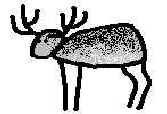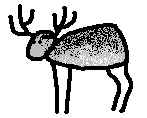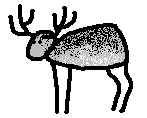


REINDEER HUSBANDRY



|
Reindeer husbandry is one of
the oldest surviving forms of nature based livelihoods in
Finland. The area where it is practised today is about
114 000 km2
in area covering almost all of Lapland province and the
northern part of Oulu province. This area is further
divided into 57 reindeer husbandry associations whose
duty it is to supervise that reindeer husbandry is
carried out properly in their own area. While in the
southern parts of this area reindeer husbandry is today
only a side-line, in Sami
districts it still is for many the main occupation. The life of a reindeer herder follows the annual cycles of his herd. His main tasks are gathering the herd, marking reindeer, counting, rounding-up, slaughtering and tending. As a result of excessive herding, providing supplementary food for the reindeer in the winter has also become one of the chief responsibilities of a reindeer herder. There is simply not enough terrestrial and arboral lichens left any more for the increased number of reindeer but it has to be complemented with supplementary feeding. In the summer the most important grazing areas are peatlands, meadows along rivers, open fells and clear-felled areas where the reindeer can find grasses, sedge and hay. Although reindeer herding is said to be one of the only surviving nature based livelihoods in Finland, that's not the whole truth. The modern reindeer herding is far from being nature based. The herds are too big for the nature to support and hence the grazing areas are in bad shape. This is especially the case in the winter grazing areas. The only way to get out of this situation is to cut the herds, but when talking about somebody's livelihood, that's never too easy. |